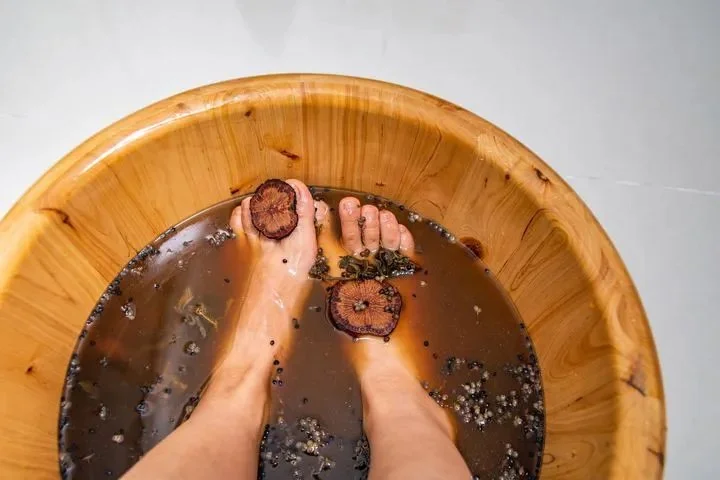Warming the Womb After Birth, Loss or Menstruation: Traditional Healing Practices from TCM, Ayurveda & Mayan Medicine
In various traditional medicine systems, the concept of warming the womb after birth, miscarriage, or menstruation is a fundamental practice for maintaining and enhancing women's health. From Chinese Medicine to Ayurveda and even the Mayan culture, the idea of keeping the womb warm is steeped in history, tradition, and practical wisdom. Whether you're in postpartum recovery, navigating loss, or tending to your menstrual health, these ancient practices offer deeply nourishing support.
Let’s dive into the fascinating world of womb warming, why it matters, and how you can incorporate these timeless practices into your daily life.
Why Warmth Matters
In traditional medicine systems, the womb, or uterus, is viewed as a vital organ that significantly impacts overall health. Maintaining its warmth is considered essential not only for reproductive health but for general well-being. When exposed to cold, the natural balance of the womb can be disrupted, potentially leading to various health issues. These might include menstrual irregularities, infertility, and even chronic pain, underscoring the importance of keeping this area warm, especially after birth, loss, or menstruation.
How Cold Enters the Body
Cold can infiltrate the body through several means. One common way is through exposure to cold environments, such as spending extended periods in chilly weather without adequate clothing. Another factor is consuming excessive amounts of cold or raw foods and drinks, which can lower the body's internal warmth. Lifestyle choices also play a role — sitting on cold surfaces, walking barefoot on cold floors, or taking cold showers, ice baths and going in cold water during menstruation.
These daily exposures add up, especially when the body is already vulnerable , like during the postpartum window, after a miscarriage or abortion, or during menstruation.
Signs and Symptoms of a Cold Womb
When the womb is too cold, it may manifest through various symptoms. These include menstrual cramps, irregular or absent periods, difficulty conceiving, lower back pain, cold feet and hands, and digestive issues. These signs are often seen in women recovering from birth, miscarriage, or with menstrual cycle imbalances, especially when the body hasn’t had time to rest and rewarm. Recognising these signs can help in identifying when the body's warmth is compromised and needs to be addressed for better health.
Womb Warming Practices from Around the World
Moxibustion (Moxa)
Originating from TCM, moxibustion involves burning mugwort near specific acupuncture points to stimulate and warm the flow of Qi. It's particularly effective for warming the womb and alleviating menstrual pain. Many women use moxa after giving birth or experiencing loss to restore warmth and flow. It is essential to work with a practitioner to understand appropriate use.
Yoni Steaming
Practiced in various cultures, yoni steaming involves sitting over a pot of steaming herbs. The steam, infused with healing herbs, rises and warms the womb, promoting circulation and healing. Yoni steaming is a traditional remedy often used after giving birth, after a miscarriage, or during menstruation to support cleansing and warmth of the womb space.
Caster oil packs
A popular remedy in Ayurveda, castor oil packs involve soaking a cloth in castor oil, placing it on the lower abdomen, and covering it with a heat source. This practice helps in reducing inflammation and improving circulation to the womb.
Nourishing the Womb with Food and Herbs
Warming Foods and Teas
Ginger: Known for its warming properties, ginger improves circulation and digestion.
Bone Broth: Rich in nutrients, bone broth provides warmth and nourishment to the body.
Cinnamon: A warming spice that can help regulate blood sugar and improve circulation.
Warming Herbs
Dong Quai: Often used in TCM, it helps to nourish the blood and improve circulation to the womb.
Mugwort: Helps to warm the womb and stimulate blood flow.
Rituals and Practices for Womb Warmth
Daily Rituals
Foot Soaks: Soak your feet in warm water with Epsom salts and ginger peel to promote warmth and relaxation.
Warm Baths: Add herbs like rosemary to your bath to enhance its warming effects.
Yoga and Movement: Gentle exercises like yoga and Qi Gong can improve circulation and maintain warmth.
Meditation: Focus on the warmth and energy in your womb, visualizing it as a glowing, warm centre.
Incorporating womb-warming practices into your life can bring not only physical benefits but also emotional and spiritual healing. These ancient traditions offer a holistic approach to women's health, emphasizing the importance of warmth, love, and care for the womb. By creating a nurturing environment, you can enhance your overall well-being and connect with the profound wisdom of your body's natural rhythms.
Want to Go Deeper?
If you're interested in womb care after birth, miscarriage or menstruation, I’ve created a free guide to Yoni steaming and womb-warming practices as part of Moon School, my online women’s health library. It’s full of gentle, traditional support to help you reconnect with your body.
You can download it here and explore more free resources.
Let me know if you try any of these and how you go!






